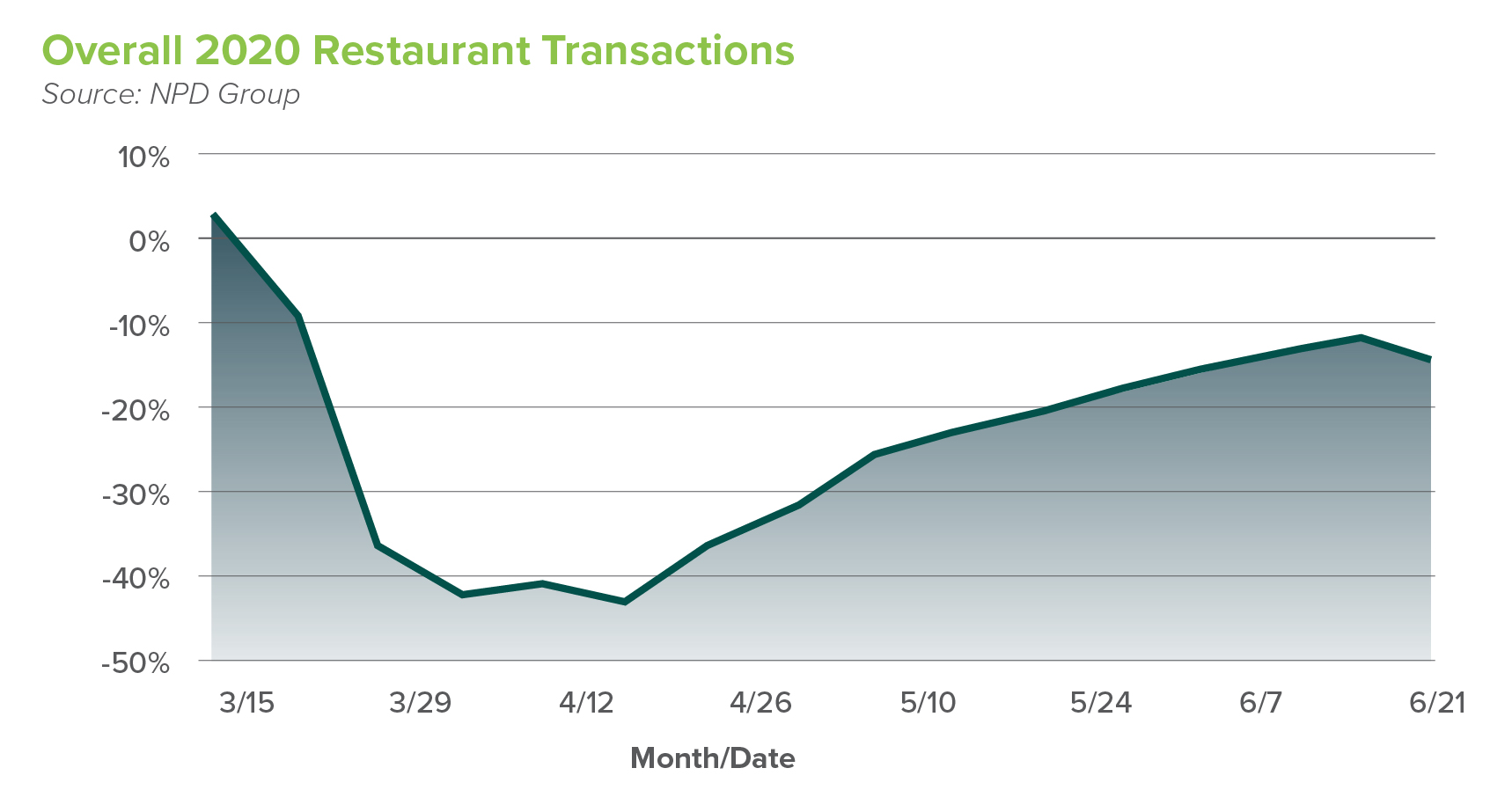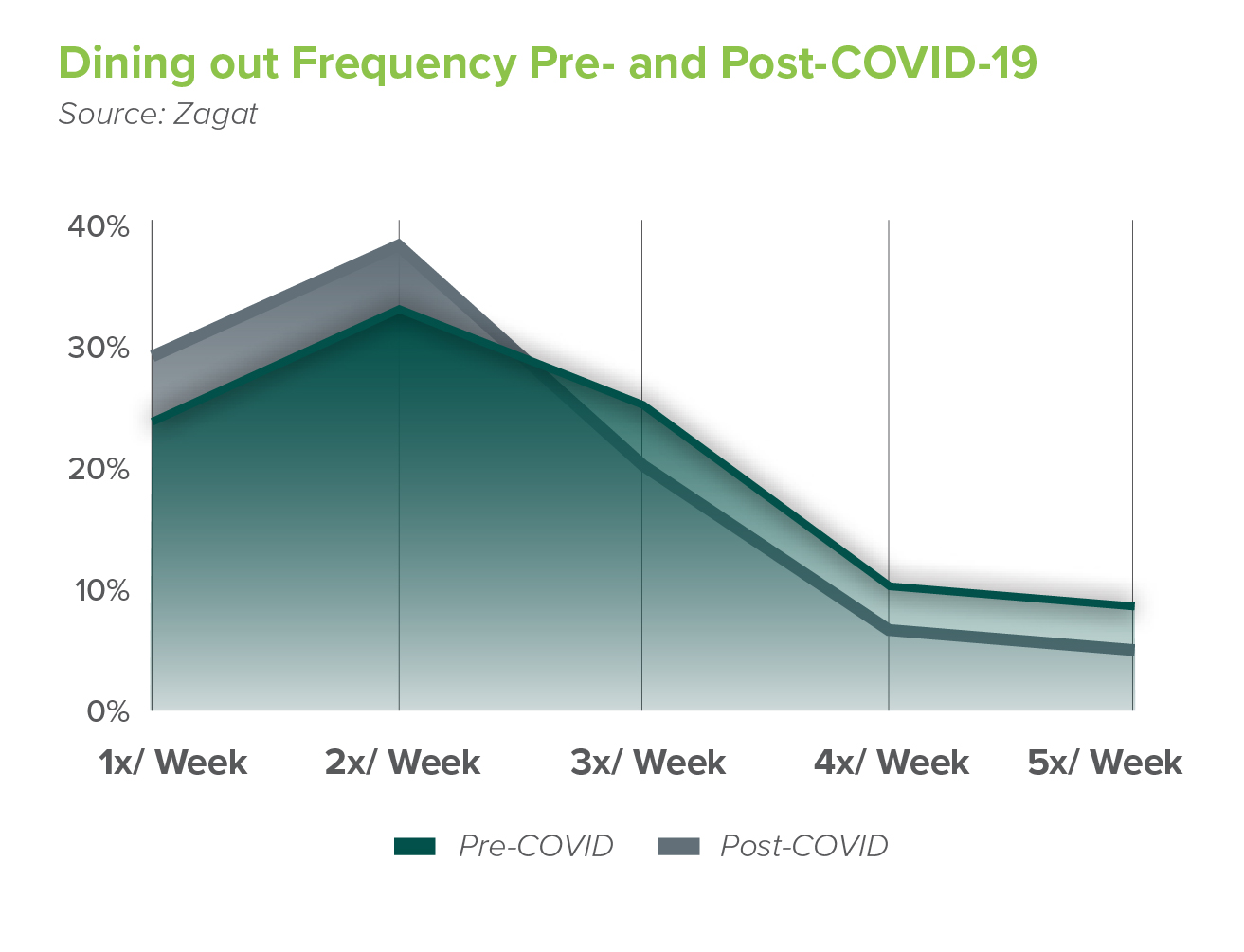A Recipe for Success
A new era of restaurants was introduced as COVID-19 spread across the globe. Operators were met with sliding sales, shifts in operations, layoffs, closures, and more in the peak of the outbreak. In response, restaurants turned to takeout, delivery, and drive-thru order fulfillments. Tenants that were struggling before the pandemic, unable to keep up with the rapid changes, fell victim to the evolving economy, with 53 percent of U.S. restaurants closing. And while 20.5 million jobs in the U.S. were lost in April, 1.5 million food and drink industry jobs were added back in June.

Limited and quick-service restaurants with drive-thrus have performed the best during the pandemic. Drive-thrus offer convenience, comfort food, and contactless transactions, and are in the best position to come back strong post-coronavirus. As the remaining restaurants gradually recover, data shows that their recovery rate is influenced by location. Depending on the location, if the restaurant is in a reopening region, they will likely recover sooner.

In this report, Matthews™ explores the COVID-19 implications on the restaurant space.









